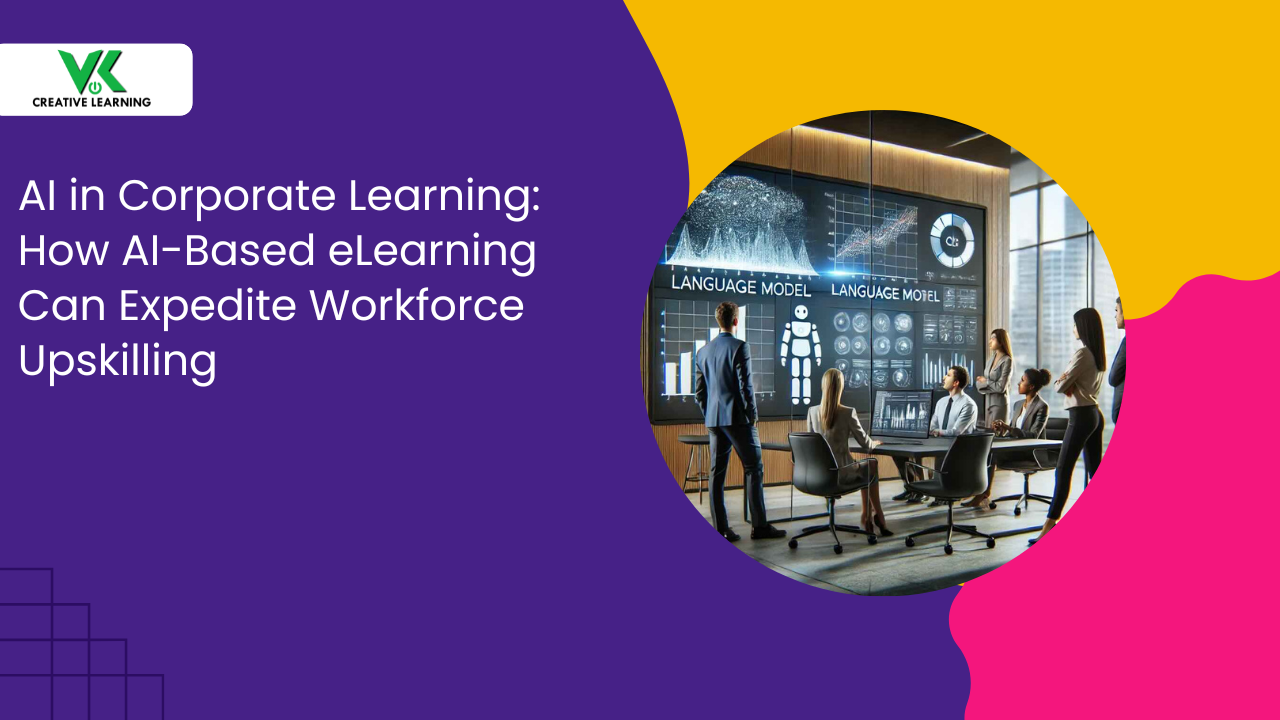Techniques to Ensure Proper Knowledge Transfer Through an eLearning Curse
July 31, 2022
To educate employees on how to do their jobs more efficiently, companies provide them with the skills and information they need to be successful in their day-to-day tasks, but this transition from learning to practice sometimes proves challenging. This because of the following reasons:
1. Learning something is an arduous task and regular revision makes it more challenging. Without any reinforcing techniques after the completion of the training, the majority of the course's material might be forgotten immediately.
2. After a training session, employees are expected to return to their jobs immediately and apply what they have learned in the training to their jobs.
In certain instances, your eLearning course may be a one-size-fits-all solution. consequently, there is a significant chance that participants of your online training session may leave the program with the impression that they are not equipped to put what they have been taught into practice in the workplace. Thus, the transfer of knowledge is not as easy as it seems, and when done without planning, the organization may have squandered time and money on staff training.
Techniques for quick transfer of knowledge and to ensure knowledge retention
The L&D team can create engaging eLearning courses and cement the information learned in their eLearning courses by using a few simple strategies, as explained below.
A planned course of action
Having an overview of the processes that learners and managers must complete facilitates transfer and aids in maintaining concentration. This plan comprises targets, methods for achieving objectives, and necessary equipment and resources. The necessary resources include the all-important support of one's colleagues and superiors, a description of the outcomes that are anticipated at the conclusion of the training, and dates indicating the stages of progression and completion.
Purpose of eLearning course creation
Even before you design the eLearning course, you should be honest with yourself and always think like your learners. You should also make sure that you provide an answer to the question "what's in it for me" from the learner's point of view!
The answers to questions such as WHY you are developing the eLearning course; WHY it is significant, and what your audience will gain from it should be crystal clear from the beginning.
One of the greatest ways to get started is to have a conversation with your workforce about training's most important aspects. Then, during the course, evaluate their comprehension and encourage them to apply what they have learned.
Instructional design
An excellent course style allows learners to engage with the content, generate their own ideas, and implement what they're learning in the simulated environment, as opposed to waiting till the training is over before applying the new knowledge on the job.
eLearning course focused on job-related responsibilities
When eLearning training materials are developed to accommodate the skills and information necessary for the application to daily task settings, the eLearning course becomes engaging. Thus, when there is a high rate of consistency between the training environment and the workplace, learners apply what they've learned.
Structured and organized content structure
With this technique, learning modules are structured and arranged with the use of a learning strategy such as Microlearning, so that only the most necessary and relatable information is taught. As the work environment is comparable to the learning ideas, this increases training transfer and improves the learner's capacity to apply information.
Multiple applications of the same expertise in several professional contexts
You will need to explore many ways in which transferred knowledge might be used in various professional contexts. This would increase the workforce's efficiency and help them implement what they have learned.
To determine what learning information must be conveyed, you can use application assignments to discover work-related issues and then build the course appropriately.
Information retention
The effectiveness of information transmission depends on the capacity of the learner to retain acquired abilities. This idea stresses making the content understandable and providing the learner with ways, tactics, and strategies to make knowledge easier to recall in order to enhance transfer. For instance, different keywords might be used to recall the steps of a safety process. Practical applications of the knowledge are also highlighted so that they are simpler to recall when confronted with a problem. This method is also known as Cognitive Transfer Theory.
Provide supervisory support on an ongoing basis
Managers and supervisors should be available to the workforce who have just completed training in order to clarify any misconceptions; refresh their memories on fundamentals, and provide constructive criticism on how effectively they are using their new skills on the job. It is equally crucial that trainees view their supervisors to be helpful in this manner!
You should make sure that every manager can explain how the training will benefit their team members and the company as a whole. You may decide to invest in management training for especially crucial courses in order to educate your managers with the knowledge they need to urge their team to use what they have learned.
The importance of providing learning assistance
During and after completion of an eLearning course, provide learners with learning assistance such as handbooks, checklists, and brief movies that they can take back to the office and use whenever necessary. These kinds of materials are very useful for teaching new techniques or adding additional stages. Even better, ensure that staff has access to relevant, easily-referenced training resources via a consolidated knowledge base.
Access to learning aids anywhere, anytime
Providing easy access to work performance enhancers through mobile devices enhances retention of learned concepts and motivates participants to continue using new knowledge on the job. Providing learners with the ability to access the content, any time and from any location, will increase their post-training engagement by allowing them to revisit content depending on their requirements and practice skills when an opportunity presents itself.
Constructive encouragement and guidance from peers
To stress the value of the training and encourage knowledge transfer, sufficient support from peers, such as inputs from the peers are essential. This aspect may be improved by introducing opportunities for group interaction and feedback into eLearning courses during course design. This may further include achievement testimonials from colleagues who have already undergone the eLearning training course.
To know more about how to enhance an eLearning training course with new ideas or create an eLearning training program based on these factors, you can contact us.




